Lag Means 33 and B'Omer is of the Omer

In Hebrew, each of the 22 letters represents a number -- the first ten letters are 1-10 -- then comes 20-100 by 10s and then 200, 300, 400. In order to write numbers, letters are used. The Holidays Tu Bishvat (the fifteenth of Shvat) and Lag B'Omer (the 33rd day of the Omer) use this method of numeration.
The Omer was mentioned in the Tora (Jewish Bible; Pentateuch) and was a barley sacrifice that was brought on the second day of Pesah (Passover) but it also refers to the period between Pesah and Shavuot (the Feast of Weeks which commemorates the giving of the Tora). The Omer period is 49 days long -- Lag B'Omer is the 33rd day.
The Omer was mentioned in the Tora (Jewish Bible; Pentateuch) and was a barley sacrifice that was brought on the second day of Pesah (Passover) but it also refers to the period between Pesah and Shavuot (the Feast of Weeks which commemorates the giving of the Tora). The Omer period is 49 days long -- Lag B'Omer is the 33rd day.
All About the Omer.....
Barley Offering and Counting the Days
The Omer offering marked the first day of the Counting of the Omer -- the 49 days between Pesah and Shavuot (The Feast of Weeks). This period is also called Sephira -- literally the counting.
During the 1st and 2nd Centuries of the Common Era, a Talmudic Rabbi named Rabbi Akiva had 24,000 students who began dying, While there are varying stories of how they died (one theory was they died from a plague when they failed to respect each other), the more likely explanation is that they were killed as part of the Bar Kokhba Rebellion (against the Romans). The students began dying during the Omerbut, according to legend, the dying ceased on Lag B'Omer.
Another explanation for the revelry of the day is that it is the anniversary of the death of Rabbi Shimon Bar Yochai(Rabbi Simon the son of Yochai) -- the reason being that the esteemed Rabbi had told his students to celebrate on that day.
Today, many Jews celebrate this day with picnics and bonfires.
More About Lag B'Omer on the Chabad Site
The Princess Who Wanted to be Beautiful
 One of my first short stories, "The Princess Who Wanted to be Beautiful" started out as a bedtime story for the children of a close friend. I had been worrying about the "Disney Syndrome" whereby all the heroes are beautiful and all the ugly people are villains. This is a story about a princess who has heard that all princesses are beautiful and doesn't think she is beautiful. She decides to go to a wizard and ask him to make her beautiful but along the way she makes some friends and learns a lesson about herself.
One of my first short stories, "The Princess Who Wanted to be Beautiful" started out as a bedtime story for the children of a close friend. I had been worrying about the "Disney Syndrome" whereby all the heroes are beautiful and all the ugly people are villains. This is a story about a princess who has heard that all princesses are beautiful and doesn't think she is beautiful. She decides to go to a wizard and ask him to make her beautiful but along the way she makes some friends and learns a lesson about herself.The Gold Star
 One of my short stories, "The Gold Star" is now available in illustrated form. The story is about a young boy named Shmuel who helps a poor man without the man knowing.
One of my short stories, "The Gold Star" is now available in illustrated form. The story is about a young boy named Shmuel who helps a poor man without the man knowing.Reading this book gives a child a view into the mind of a child whose only thought is how can he help. Reading about Tzedaka (Charity) and Gemilot Hesed (acts of kindness) helps teach a young child that helping others is a good trait and something (s)he should strive for.



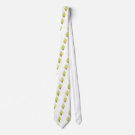

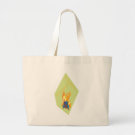

 The 25th day of the Month of Kislev marks the beginning of Hanuka.
The 25th day of the Month of Kislev marks the beginning of Hanuka.  Computer Graphics - The juxtaposition of the early 20th century phone with vinyl records from the 1950s and beyond reminds us of how far we've come in a few generations.
Computer Graphics - The juxtaposition of the early 20th century phone with vinyl records from the 1950s and beyond reminds us of how far we've come in a few generations. Computer Graphics - New York is one of the most exciting cities in the world. But, it does have a lot of Neon.
Computer Graphics - New York is one of the most exciting cities in the world. But, it does have a lot of Neon. Computer Graphics - Jerusalem is the confluence of three major world religions, all are represented in this piece.
Computer Graphics - Jerusalem is the confluence of three major world religions, all are represented in this piece. Computer Graphics - Four different patterns with rainbow pastel colors on a light purple background.
Computer Graphics - Four different patterns with rainbow pastel colors on a light purple background. Computer Graphics - Inspired by Film Noir, this piece, with strong colors on a black background, brings the art up to date
Computer Graphics - Inspired by Film Noir, this piece, with strong colors on a black background, brings the art up to date Computer Graphics - This graffiti inspired Love design with a vinyl effect is perfect for Valentine's Day
Computer Graphics - This graffiti inspired Love design with a vinyl effect is perfect for Valentine's Day Computer Graphics (Corel) - Flower Star on a blue background.
Computer Graphics (Corel) - Flower Star on a blue background. Computer Graphics (Corel) - In the Bible, in Genesis, G-d tells Abraham that He will bless Abraham's children and those who bless Abraham's Children with be blessed.
Computer Graphics (Corel) - In the Bible, in Genesis, G-d tells Abraham that He will bless Abraham's children and those who bless Abraham's Children with be blessed. Computer Graphics (Corel) - You'll stay healthier if you eat a good breakfast
Computer Graphics (Corel) - You'll stay healthier if you eat a good breakfast Computer Graphics (Corel) - The Western Wall is the only surviving part of the Second Temple. Jews pray there every day.
Computer Graphics (Corel) - The Western Wall is the only surviving part of the Second Temple. Jews pray there every day.





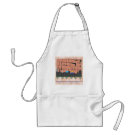

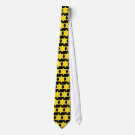

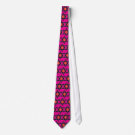


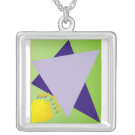


 The first letter of the Hebrew Alphabet (called the "Aleph-Bet") is Aleph.
The first letter of the Hebrew Alphabet (called the "Aleph-Bet") is Aleph.

 Vowels in Hebrew aren't always written out. But these are a few of the vowels that are written under letters.
Vowels in Hebrew aren't always written out. But these are a few of the vowels that are written under letters.


 Hay sounds like an aspirated H -- as in hello, howdy, etc. It also is a common letter to end words with, particularly feminine nouns and names.
Hay sounds like an aspirated H -- as in hello, howdy, etc. It also is a common letter to end words with, particularly feminine nouns and names.
 Zayin sounds like the letter "Z".
Zayin sounds like the letter "Z". Het sounds like the ch in Achtung and is the first letter in the word Hanukka.
Het sounds like the ch in Achtung and is the first letter in the word Hanukka.
 Yod (which is a small letter that is only about 1/2 the size of most other letters -- the top half) when used as a consonant, (it sometimes talks the place of a vowel) sounds like a "Y".
Yod (which is a small letter that is only about 1/2 the size of most other letters -- the top half) when used as a consonant, (it sometimes talks the place of a vowel) sounds like a "Y".
 Khoph (Koph without a dagesh) has a sound similar to the Het (see above).
Khoph (Koph without a dagesh) has a sound similar to the Het (see above).
 This word is "Gadol" -- it means "Big" (for males).
This word is "Gadol" -- it means "Big" (for males).
 Nun sounds like an "N".
Nun sounds like an "N".
 Ayin originally (and for most Hebrew speakers from the middle east) had a guttural sound similar to a "G" -- this is why words like Amora (the "sister" city of Sodom) and Azah (as in the strip) -- became "Gomorrah" and "Gaza". From the perspective of most American speakers, Ayin has no sound.
Ayin originally (and for most Hebrew speakers from the middle east) had a guttural sound similar to a "G" -- this is why words like Amora (the "sister" city of Sodom) and Azah (as in the strip) -- became "Gomorrah" and "Gaza". From the perspective of most American speakers, Ayin has no sound.
 Phe has a sound like an "F".
Phe has a sound like an "F".
 Kuf sounds like a "K".
Kuf sounds like a "K".
 Shin sounds like "Sh"
Shin sounds like "Sh"
 Tav Sounds like a "T"*
Tav Sounds like a "T"*
